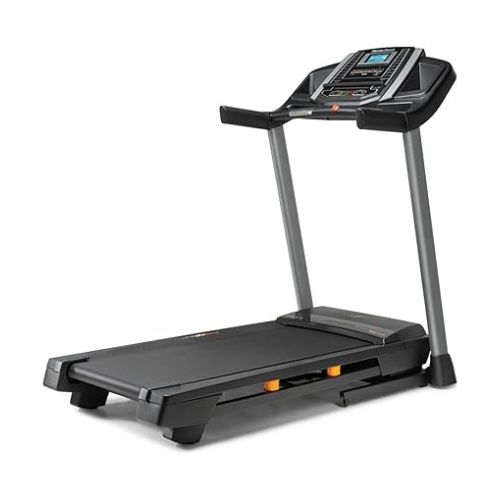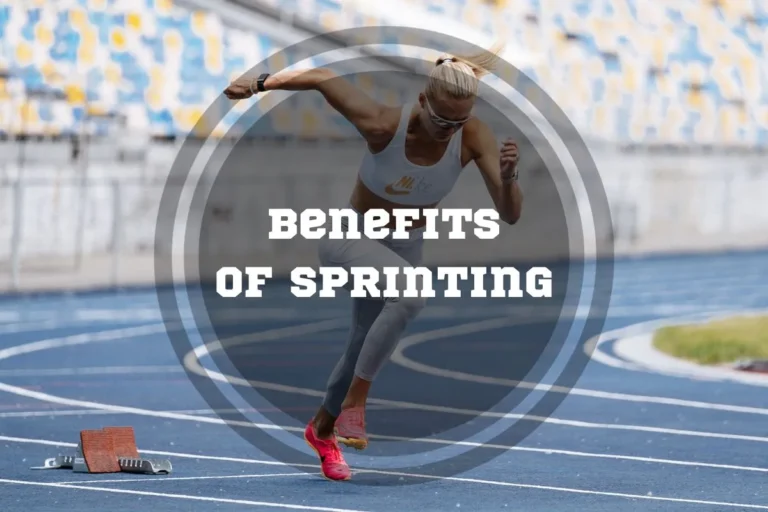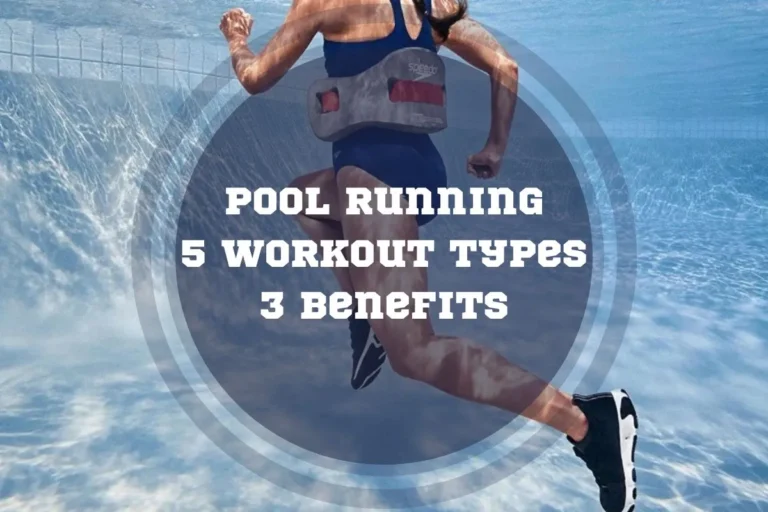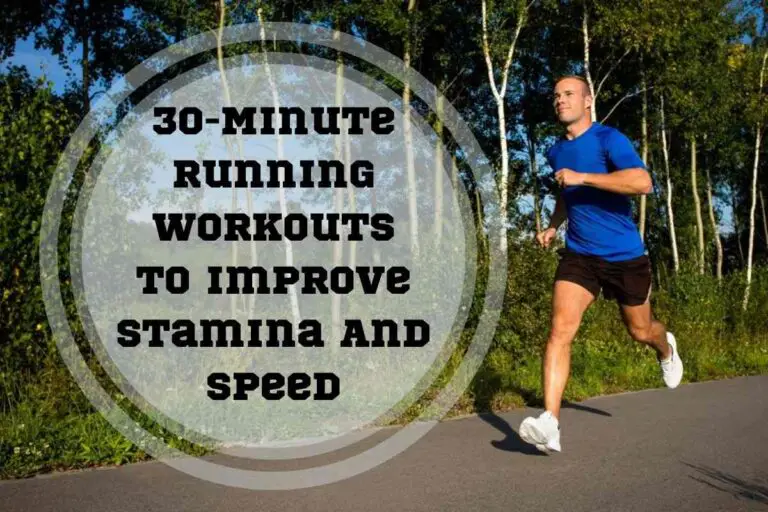What is a Good Treadmill Speed – Finding the Perfect Pace
You’ve spent weeks researching different treadmills, you made a spot for it in your gym, and you finally got it. You bring it inside your house, unpack it, set everything up… And now what? You know a treadmill will give you a good workout, but what is a good treadmill speed? In theory, you know it should be a balance between being challenging and safe, but what exactly does that mean? There’s no such setting on your treadmill.
A treadmill can do it all – it can keep you active, it can help you lose and manage weight, improve your cardiovascular health, build endurance, etc. There’s hardly anything it can’t do, but only if you know the ideal speed, and that is exactly what this article will do for you. You could be a beginner or a pro, we have all the information you could possibly want regarding treadmill speed – what factors you need to consider, what is a good speed to walk on a treadmill to lose weight, how to work your way up to sprinting… And more!
Hop on and let’s get started!
What is a good treadmill speed?
A good treadmill speed depends on your fitness level and goals. A brisk walk needs 3-4 mph, 5-7 mph is okay for jogging, and for running, you’ll need it set up at 8-10 mph.
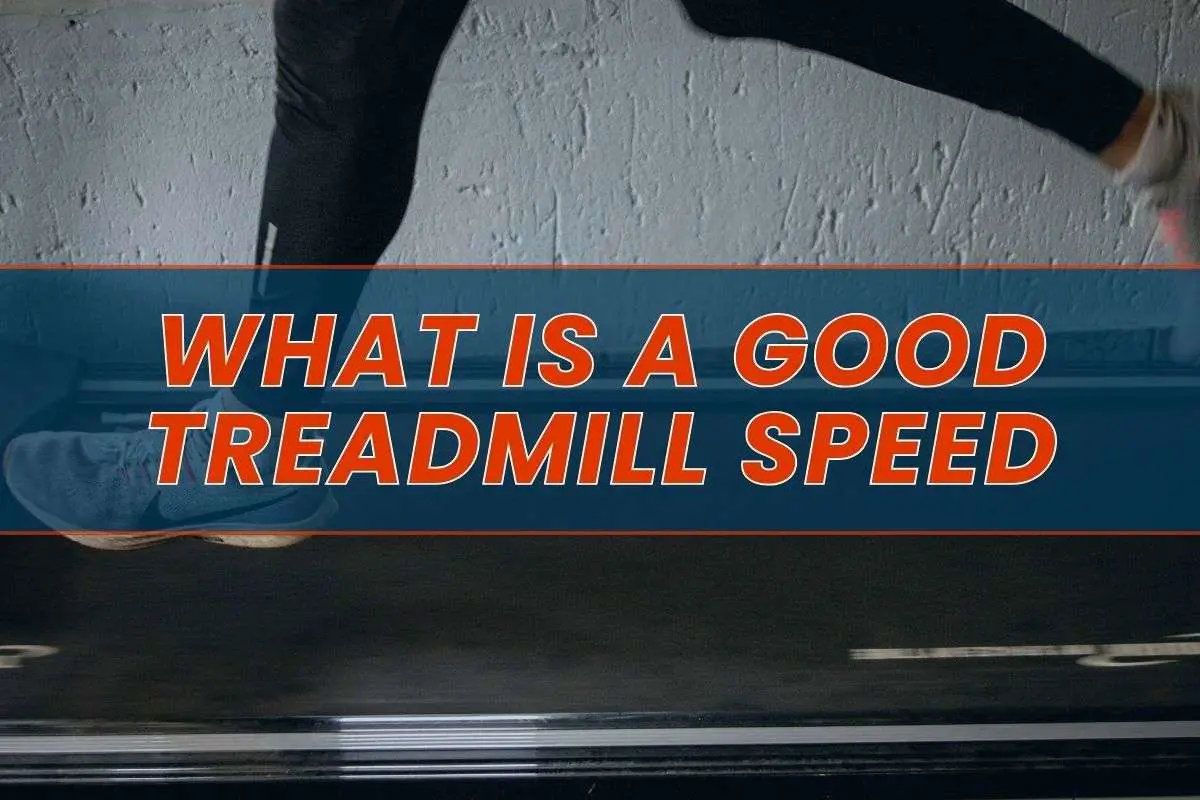
What Does the Speed of the Treadmill Mean?
You can take a brisk walk, jog, or you can get an intense running session on your treadmill – depending on the speed you set it at, which is typically indicated in kilometers per hour (km/h). This measurement reflects the rate at which the treadmill belt moves beneath you and shapes the pace of your exercise.
Treadmills offer a wide range of speeds, so there’s no way you won’t find something that suits you. If you want to take a walk, you can set your treadmill at 4.8 to 6.4 km/h. It’s a great, low-impact way to stay active, manage and lose weight, and get some cardiovascular benefits. If you’d prefer a jog, you’ll need to set your treadmill at 8 to 11.2 km/h, and this will engage more muscle groups than walking. For running, set the treadmill at 12.8 to 16 km/h.
The max speed of a treadmill varies from model to model, and some of them can reach speeds of 20 km/h or even higher. The upper limit is meant for experienced runners and those who want intense training, so don’t even try them if you want something less demanding.
3 Factors Influencing Treadmill Speed
The right speed is not a one-size-fits-all decision because there are a lot of factors at play. Before choosing your new treadmill, it would be good if you got familiar with what exactly influences the speed, so you know what to expect.
1. Treadmill Type
The type of treadmill plays a big role in what kind of speed range it has. For example, a manual treadmill is powered only by your movement, so when it comes to speed, it’s rather limited compared to motorized treadmills. There are also home treadmills, designed for personal use, and those might not have speed capabilities that are as impressive as those you’ll find on commercial treadmills. Still, they’re a better choice (speed-wise) than manual treadmills.
2. Treadmill Range
The range of speed is another factor and it’s one of the first specs you should check before you buy a treadmill. If you want to be able to walk, jog, and have intense running sessions, go for a treadmill with a wide range of speed settings.
3. Incline Settings
Incline settings are like an additional dimension to speed. If you walk or run on an incline, your workout will be more intense, and the incline will allow you to challenge yourself without having to rely only on the changes in speed.
Average Treadmill Speed By Age
This is something that varies across different age groups, and it doesn’t reflect only a person’s age, but also their priorities, fitness levels, health conditions, and goals. So you shouldn’t define treadmill speeds only based on someone’s age; but here are some generalizations.
For teens and people in their twenties, the average treadmill speed might range from 6.5 to 8.5 mph (10.5-13.7 km/h). This demographic often wants workouts that are higher in intensity, and they will include running and interval training to maintain cardiovascular health and overall fitness.
People in the age group of 30 to 50 might set their treadmill on a lower speed, ranging from 5.5 to 7.5 mph (8.9-12.1 km/h) because they usually balance fitness with other lifestyle demands, so they’ll incorporate a mix of walking, running, and jogging.
Those over 50 will adjust their speed too, to 4.5 to 6.5 mph (7.2-10.5 km/h) because they are after joint health and endurance and prefer light jogging and walking.
It’s important to keep in mind that this information is general, and it all varies according to individual preferences, fitness levels, and goals. Regardless of your age, the best thing to do is to set the speed in alignment with what you’re trying to achieve.
Good Speed of the Treadmill Depending on the Level of Training
Age plays a part when determining the ideal speed, but your fitness level is even more important than your age. Imagine a complete beginner setting their treadmill to 10.5 mph – they would fly off it sooner than they would be able to run.

Pro Tip:
A baseline locomotion speed in humans is defined as follows: A speed of up to 3.7 mph (6 kmh) is considered walking. 3.7-5 mph (6-8 kmh) is considered jogging. 5-6.2 mph (8-10 kmh) is light running. 6.2-8.1 (10-13 kmh) is considered dedicated running. And a speed of 8.1 (13 kmh) and more is considered sprinting.

Pro Tip:
A baseline locomotion speed in humans is defined as follows: A speed of up to 3.7 mph (6 kmh) is considered walking. 3.7-5 mph (6-8 kmh) is considered jogging. 5-6.2 mph (8-10 kmh) is light running. 6.2-8.1 (10-13 kmh) is considered dedicated running. And a speed of 8.1 (13 kmh) and more is considered sprinting.
Since we don’t want to see you fly off a treadmill, let’s go over the speed setting according to fitness levels and the exercises, and there’s even a treadmill speed chart included after each subsection in case you don’t feel like reading everything.
1. Running
Running is one of the most intense exercises you can do on a treadmill, so you need to make sure the speed is set correctly. If you’re a beginner, treadmill running speed should be set at 5.5 to 6.5 mph (8.9 to 10.5 km/h) and you should build stamina and endurance before increasing it.
For those who have a bit more experience, a good running speed on a treadmill will be between 7 and 8.5 mph (11.3 and 13.7 km/h) and they can include intervals to improve speed and cardiovascular fitness. If you’re an advanced runner, the speed can go from 9 to 10.5 mph (14.5 to 16.9 km/h), challenge yourself and add sprint intervals to your training.
| TRAINING LEVEL | SPEED RANGE (mph) | SPEED RANGE (km/h) |
|---|---|---|
| Beginner | 5.5-6.5 | 8.9-10.5 |
| Intermediate | 7-8.5 | 11.3-13.7 |
| Advanced | 9-10.5 | 14.5-16.9 |
Calculator of Running Time
This running time calculator employs a formula considering the individual indicators like: distance, gender, training level, and person’s age of the runner. You can use our calculator to estimate how long it will take you to run the planned distance. And then compare this data with the actual time spent on the treadmill.
Running Time Calculator
Result:
2. Walking
Walking is a fantastic way to stay active, but there are different levels of experience when it comes to walking on a treadmill, and it’s important to adjust the speed accordingly. Beginners need to start with 2.5 to 3.5 mph (4 to 5.6 km/h) and focus on consistency and duration. Those that are at an intermediate level can set the speed between 3.5 and 4.4 mph (5.6 and 7.2 km/h) and intensify the workout a little. Experienced walkers can crank up the speed at 4.5 to 5.5 mph (7.2 to 8.9 km/h) and add brisk walking with longer strides, which will increase calorie burn.
| TRAINING LEVEL | SPEED RANGE (mph) | SPEED RANGE (km/h) |
|---|---|---|
| Beginner | 2.5-3.5 | 4-5.6 |
| Intermediate | 3.5-4.5 | 5.6-7.2 |
| Advanced | 4.5-5.5 | 7.2-8.9 |
3. Sprint
Sprinting is no joke, and the speed is set at pretty high levels, even for beginners, who should set their treadmill speed anywhere between 8 and 10 mph (12.9 to 16.1 km/h) and start with shorter bursts of speed with recovery time between intervals. Stick to the beginner treadmill speed for a while before increasing it.
People who are not quite beginners, but also not too experienced, can set their speed at 10 to 12 mph (16.1 to 19.3 km/h) and challenge both their cardiovascular and muscular systems. If you’re advanced, you can set the speed at an impressive range – 12 to 15 mph (19.3 to 24.1 km/h) and incorporate explosive bursts for HIIT.
| TRAINING LEVEL | SPEED RANGE (mph) | SPEED RANGE (km/h) |
|---|---|---|
| Beginner | 8-10 | 12.9-16.1 |
| Intermediate | 10-12 | 16.1-19.3 |
| Advanced | 12-15 | 19.3-24.1 |
4. Jogging
Jogging is not really running, but not really walking either, so if you’re new to treadmills, it’s a good idea to start with jogging and work your way up to running. Set your jogging speed on treadmill between 4.5 and 5.5 mph (7.2 to 8.9 km/h) and maintain a comfortable pace. As you build endurance, you can increase your speed little by little.
Intermediate joggers can jog a bit faster, between 6 and 7 mph (9.8 and 11.3 km/) to promote cardiovascular fitness and engage more muscles. Experienced joggers can challenge themselves with higher speeds, between 7.5 and 8.5 mph (12.1 and 13.7 km/h) and improve their overall running proficiency.
| TRAINING LEVEL | SPEED RANGE (mph) | SPEED RANGE (km/h) |
|---|---|---|
| Beginner | 4.5-5.5 | 7.2-8.9 |
| Intermediate | 6-7 | 9.7-11.3 |
| Advanced | 7.5-8.5 | 12.1-13.7 |
6 Advantages of Training on a Treadmill
Treadmills are one of the most popular pieces of equipment because they’re versatile, accessible, and the exercises they offer can improve your cardiovascular health. If you don’t have one yet, you’ll wish you did by the end of this section.
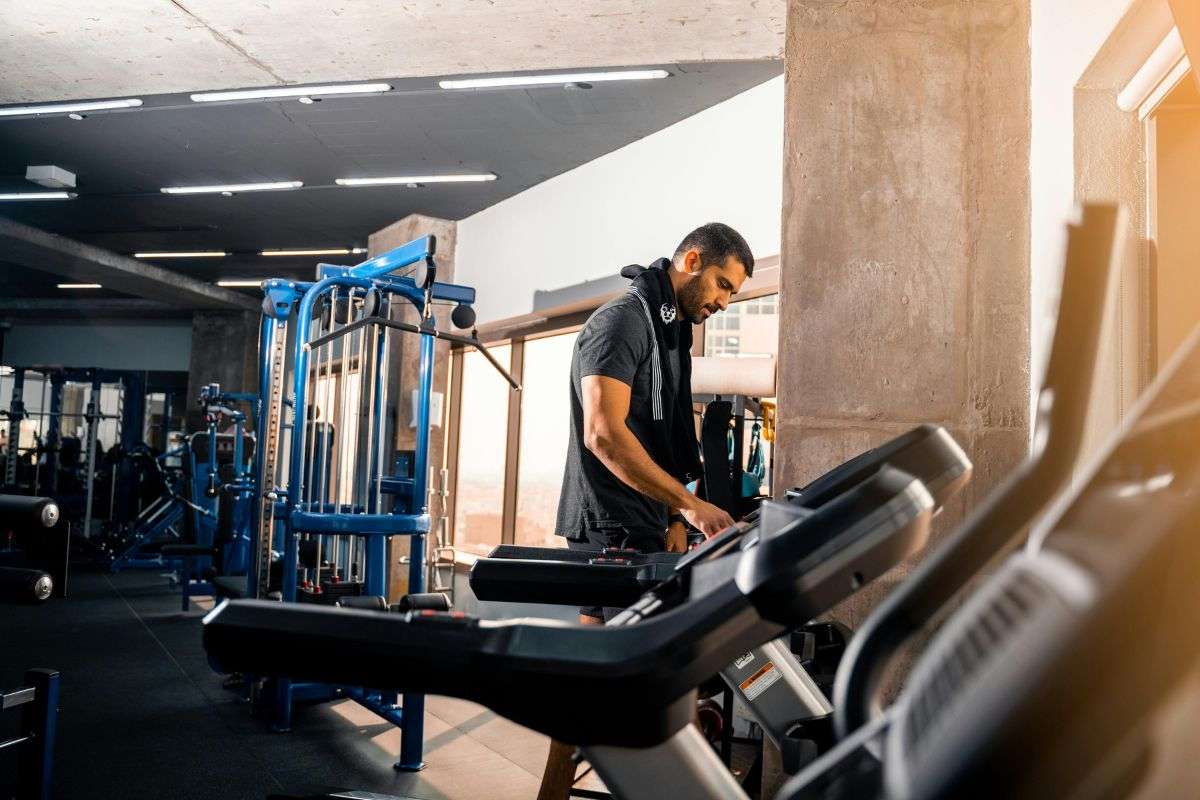
1. Controlled Environment
A treadmill will allow you to adjust the speed, incline, and the duration of your workout, so it gives a very controlled environment for exercising. This is especially useful for beginners and people who are recovering from injuries.
2. Customizable Intensity
You can go for a light walk today, and then have a butt-kicking running session tomorrow. The treadmill will allow you to adjust the intensity of your workout according to your preference, and you can tailor your routine in line with your goal, whether it’s weight loss, building endurance, or improving your cardiovascular health.
3. Easier on the Joints
When you compare running or walking outdoors with the surface of a treadmill, the latter is a more joint-friendly option. Treadmills have cushioned belts that help reduce the impact on your joints. If you have arthritis or you’re prone to injuries but still like to work out, get yourself a treadmill.
Subscribe to Our Running Newsletter!
Get free running tips from renowned professional athletes and discounts from top-notch brands.
4. Safety Features
Treadmills come with safety features, like emergency stop buttons and handrails that reduce the risk of accidents during workouts. These features make your entire workout environment safer, and you can focus on your form more, rather than worrying about possible mishaps.
5. Mental Health
Physical activity does wonders for your mental health, and it doesn’t even need to be too intense to do so. Hop on a treadmill and take a quick walk – your mental health will be super thankful for it.
6. Weight Management
Cardio is very effective at managing and losing weight, so whether you’re trying to lose weight or keep it where it’s at, the treadmill can help you.
Our Treadmill Recommendation – NordicTrack T Series 6.5S
NordicTrack is known for exceptional quality, and the prices that come with it, but this treadmill is decently priced, but the quality is just what you would expect from NordicTrack.
It has a smart-response motor and incline that goes up to 10%, so you can make your workout more or less challenging by adjusting it. The treadmill belt is nice and spacious – 20’’x55’’, and it has FlexSelect cushioning to protect your joints from impact. It is very easy to fold and store if you can’t dedicate a spot to it, and the 30-day iFit trial lets you get acquainted with the app without any charges.
The user capacity is 300 pounds, and the treadmill comes with a 10-year frame warranty. It’s a bit difficult to assemble and you’ll probably need someone to help you with it, but once you get past it, everything else is a breeze.
Pros:
- Powerful motor
- Compact and easy to store
- Spacious belt
Cons:
- Complicated assembly process
3 Treadmill Speed Training Workouts
Running, jogging, walking, whatever you do – it can become monotonous and boring if you’re doing the same thing every day. But besides being bored, you won’t get the most out of your treadmill if you’re just repeating the same movements over and over. It may not look like it, but your treadmill can do so much more than just the basics.
1. Interval Sprints
The best speed for interval sprints is between 8 and 10 mph, and they will help you improve sprinting capabilities and increase your heart rate. You can do them on a flat incline, but if you want an extra challenge, you can increase the incline slightly. Do 8-10 rounds of interval sprints – 30 seconds of sprinting followed by 60 seconds of jogging. This exercise is more suited to advanced and intermediate runners, so if you’re a beginner, it’s not an ideal way to start.
2. Pyramid Intervals
This exercise works for all fitness levels, and you do it on a flat incline. Set the treadmill mph between 6 and 8.5 and gradually increase and decrease the speed in pyramid fashion. Start with 1 minute each at increasing speeds, peaking, and then decreasing.
3. Uphill Challenge
Advanced runners won’t find this challenging enough, but if you’re a beginner or intermediate, give it a go. Set the speed between 3.5 and 5.5 mph and maintain a consistent pace uphill. The incline should be set at 5% and you should do this for 15 to 20 minutes.
Are treadmills suitable for speed training?
Treadmills are very suitable for speed training because of their customizable speed settings, consistent pacing, and support for interval training. Adjusting the incline will add variety to your training and engage different muscle groups, and with the safety features, it will give you a safe, controlled environment to exercise in.
FAQ
What pace should I use for speed training on the treadmill?
Start with a pace that’s a little faster than your comfortable running speed and increase the speed bit by bit as you become more experienced. You want a pace that challenges your cardiovascular system, and this might range from 8 to 12 miles per hour.
Can treadmills go 20 mph?
They sure can! There are specialized, high-performance treadmills that can reach impressive speeds of 20 mph or more. They’re designed for professional athletes and advanced runners who want intense speed training.
What is a speed of 7.0 on a treadmill?
A speed of 7.0 is usually a brisk jog – not really a run, but not a walk either. The workout you’ll get from it is moderate in intensity, but it’s still suitable for cardiovascular conditioning.
Is 12 mph fast on a treadmill?
Yes, 12 mph is quite fast and it’s the same as a 5-minute mile, so this speed is reserved for advanced runners. The pace is challenging, so if you’re a beginner, you won’t get anything out of trying to run at this speed, except perhaps an injury.
Conclusion
Now you know all there is when it comes to treadmill speed! We left no stone unturned – you know what each speed is for, what to expect from it, how fast do treadmills go, what’s a good speed to start, and you have a few workouts to prevent you from getting bored.
If you’re in the market for a new treadmill, give the NordicTrack T Series 6.5S a try. Its price is really decent and the treadmill itself is amazing quality, with a spacious belt that will fit even the tallest people.
Let’s see what you have to say about this! What’s the best treadmill speed to pace according to your experience? Do you like running or prefer walking? Do you have any tips for people who are just starting out? What do you think is the best treadmill speed for cardio?
We look forward to seeing your comments and responding to any questions you may have!
Speeding off!
References:
- Aditya Mahindru, Pradeep Patil, Varun Agrawal “Role of Physical Activity on Mental Health and Well-Being: A Review,” Cureus 15, no. 1 (2023): e33475.
- Hye-Ryun Hong, Jin-Ok Jeong, Ji-Young Kong, Sang-Hee Lee, Seung-Hun Yang, Chang-Duk Ha, Hyun-Sik Kang “Effect of Walking Exercise on Abdominal Fat, Insulin Resistance and Serum Cytokines in Obese Women,” Journal of Exercise Nutrition and Biochemistry 18, no. 3 (2014): 277-285.
- J. M. Rippe, A. Ward, J. P. Porcari, P. S. Freedson “Walking for Health and Fitness,” JAMA 259, no. 18 (1988): 2720-2724.
- Joseph E. Donnelly, Jeffery J. Honas, Bryan K. Smith, Matthew S. Mayo, Cheryl A. Gibson, Debra K. Sullivan, Jaehoon Lee, Stephen D. Herrmann, Kate Lambourne, Rik A. Washburn “Aerobic Exercise Alone Results in Clinically Significant Weight Loss for Men and Women: Midwest Exercise Trial-2,” Obesity 21, no. 3 (2013): E219-E228.
- “Walking for Exercise,” Harvard School of Public Health, https://www.hsph.harvard.edu/nutritionsource/walking/ (accessed February 7th, 2024)
- Photo from Pexels by: Magda Ehlers, Julia Larson, Abdulrhman Alkady
If you have any questions or suggestions, you can contact us via email – [email protected]

